Situaciones en suma
Museo de Arte de la Universidad Nacional de Colombia
2016
Curatorial and museography
Alejandro Morales, Juaniko Moreno, Jazmín Rojas Forero
Artists
Andrés Forero / Andrés Roballo / Camila Ospina / Daniel Fajardo / Daniela Sáenz / Daniela Salamanca / Esteban Ferro & Juanita Espinosa / John Campos / José Gabriel Hernández / Juan Sebastián Testa / Karen Cárdenas / Lina Henao / Lucía González & Mauricio Gallego / Marcela Florián / Mariana Salazar / Mayerly Ferrucho & Marcela Rodríguez / Sergio Bonilla & Pablo Baresch / Pedro Jiménez & Santiago Lemus / Santiago González / Sarah Reina / Victoria Montaña / Liz Delmar García & Mateo García / Timothy Noble, Angelica Piedrahita, Camilo martinez, David Sepúlveda, Salomé Rojas & Carolina Avila
Tutorship
Jaime Cerón and Alejandro Mancera
Commissioned by
Museo de Arte de la Universidad Nacional
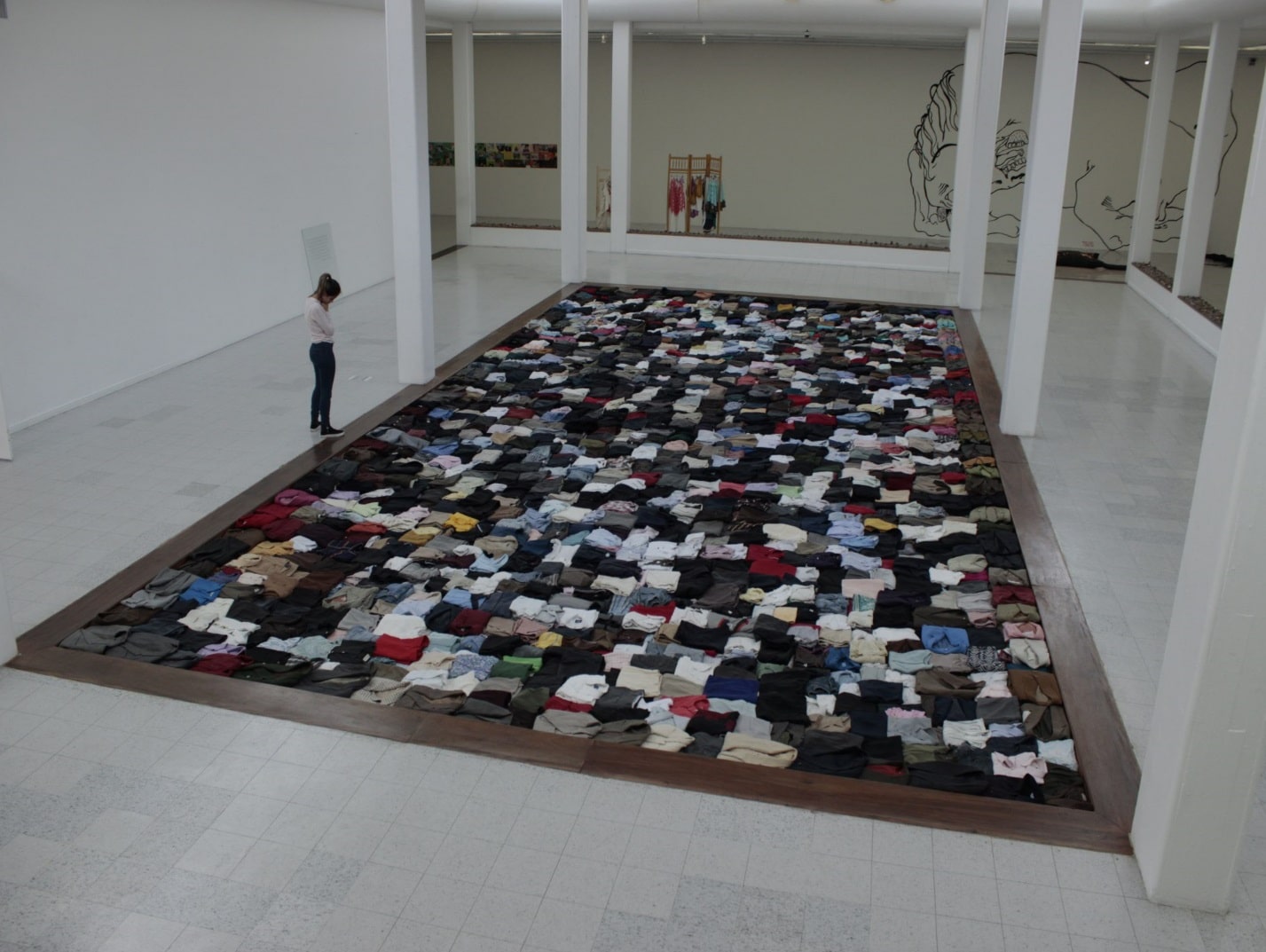
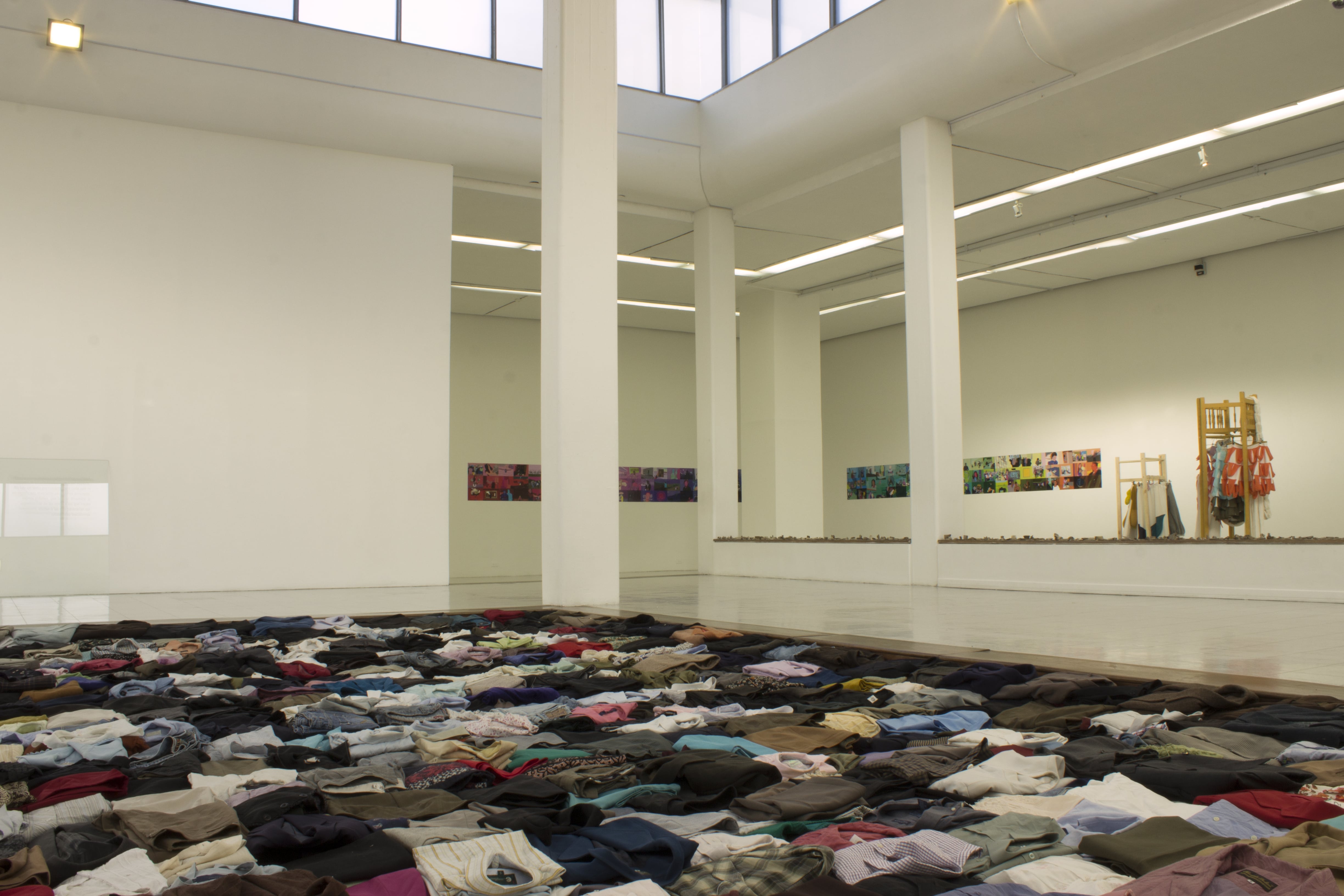

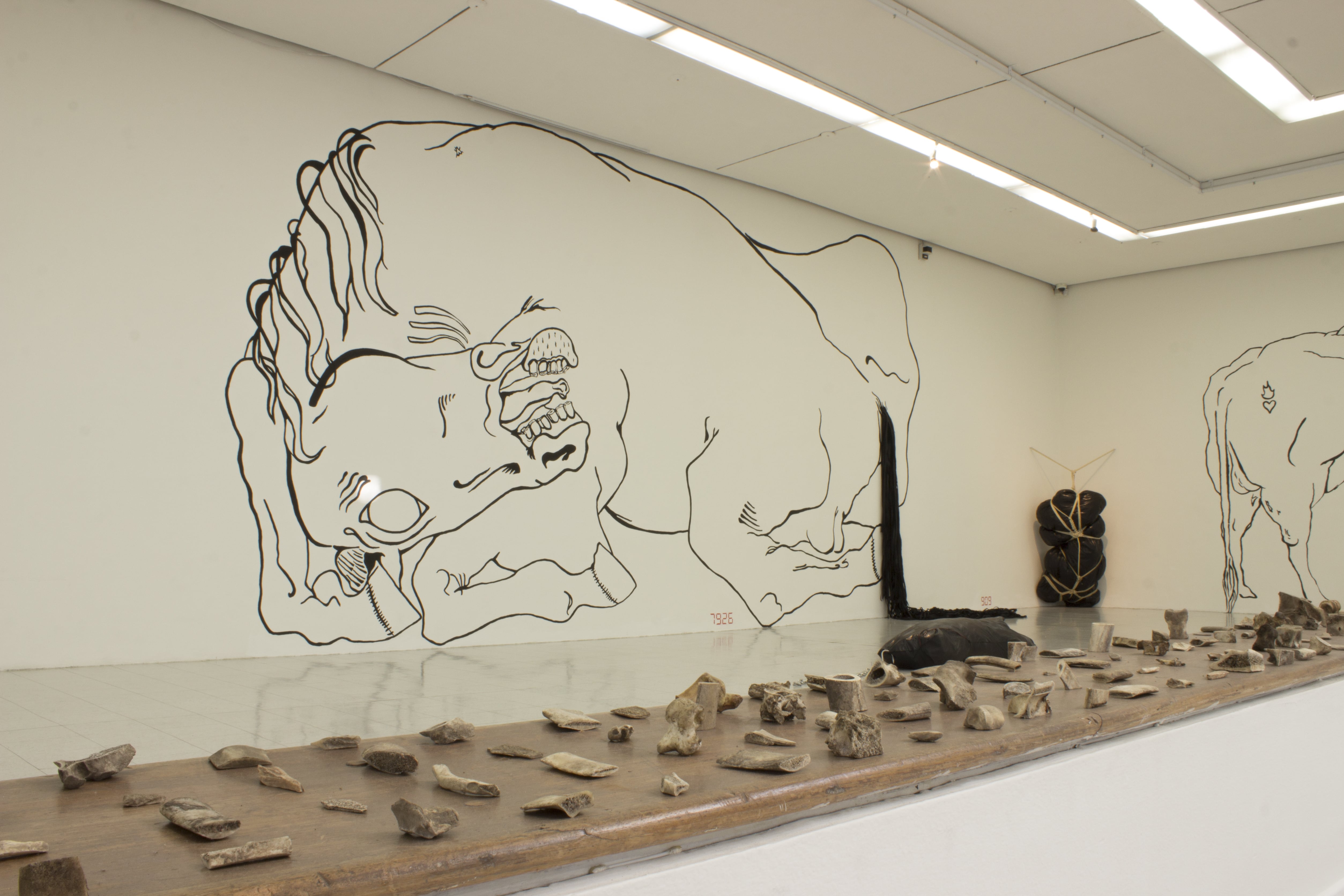
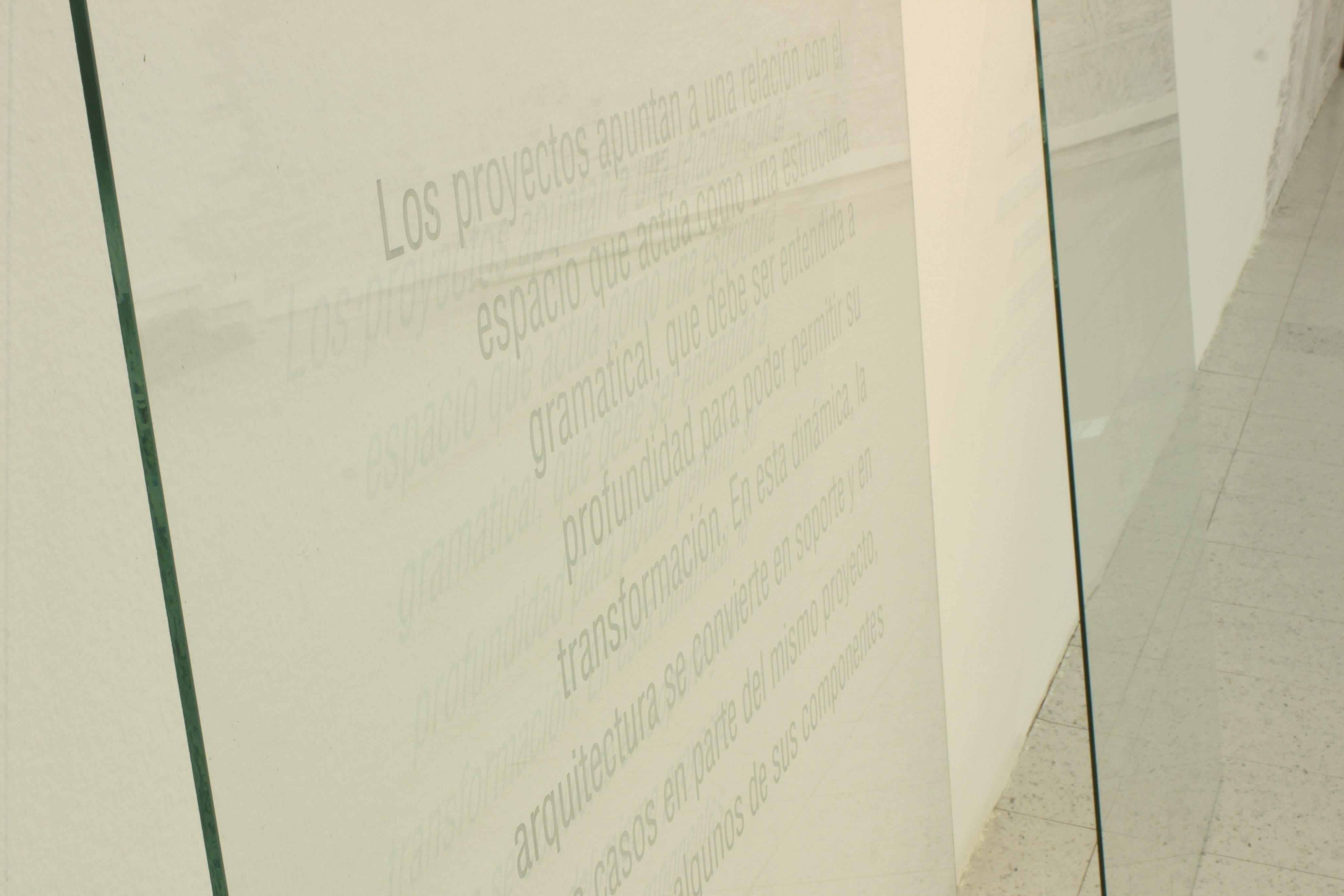
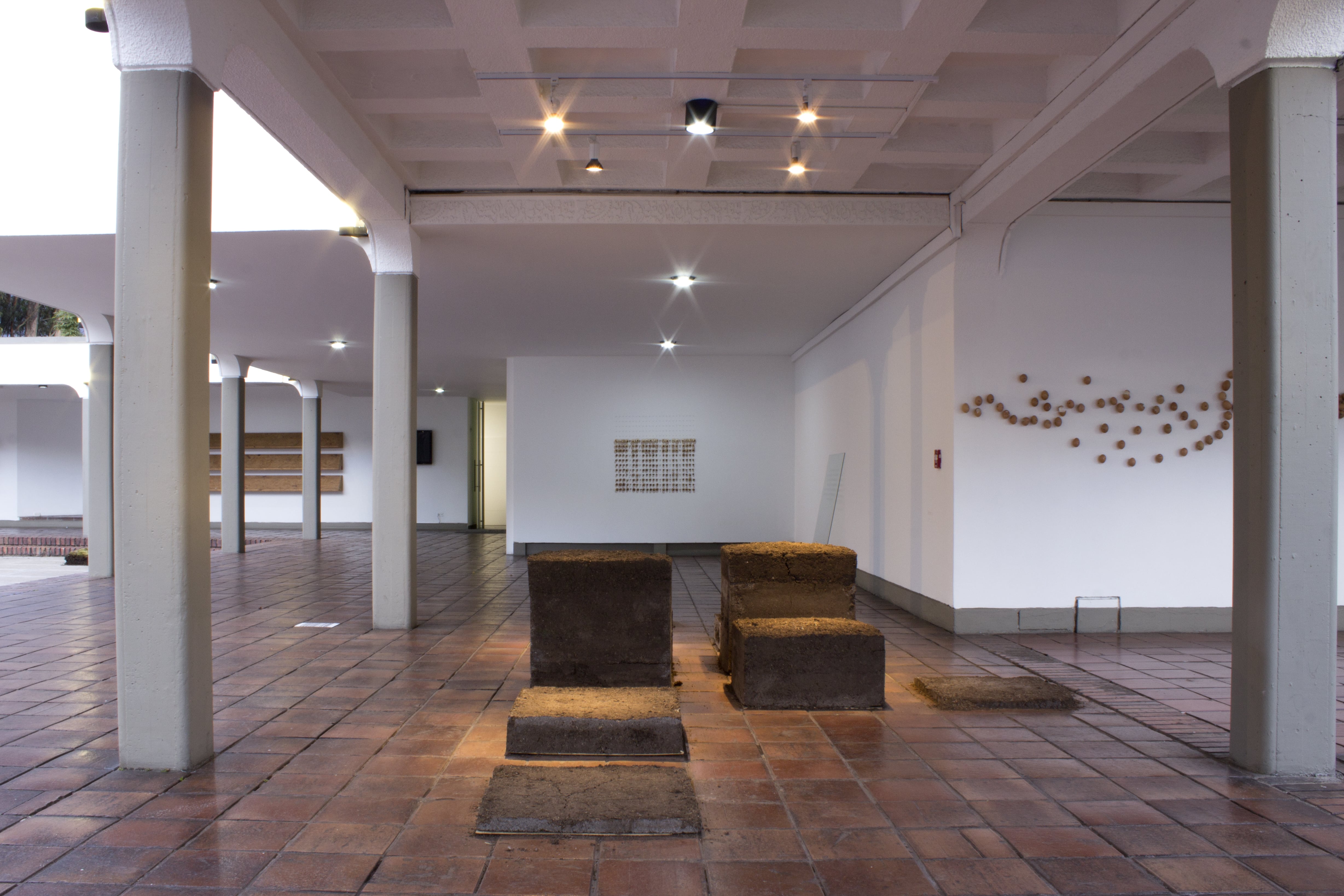

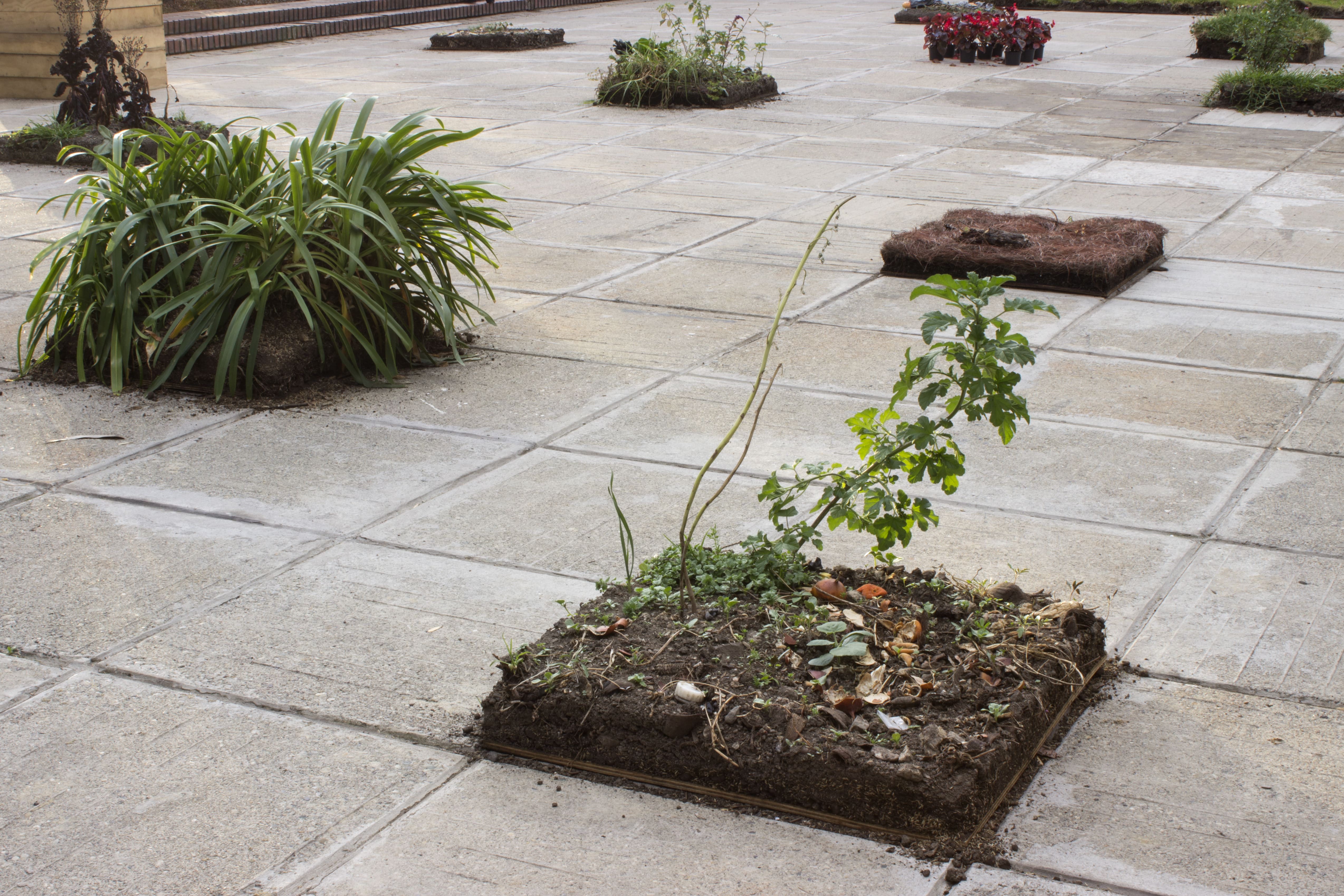
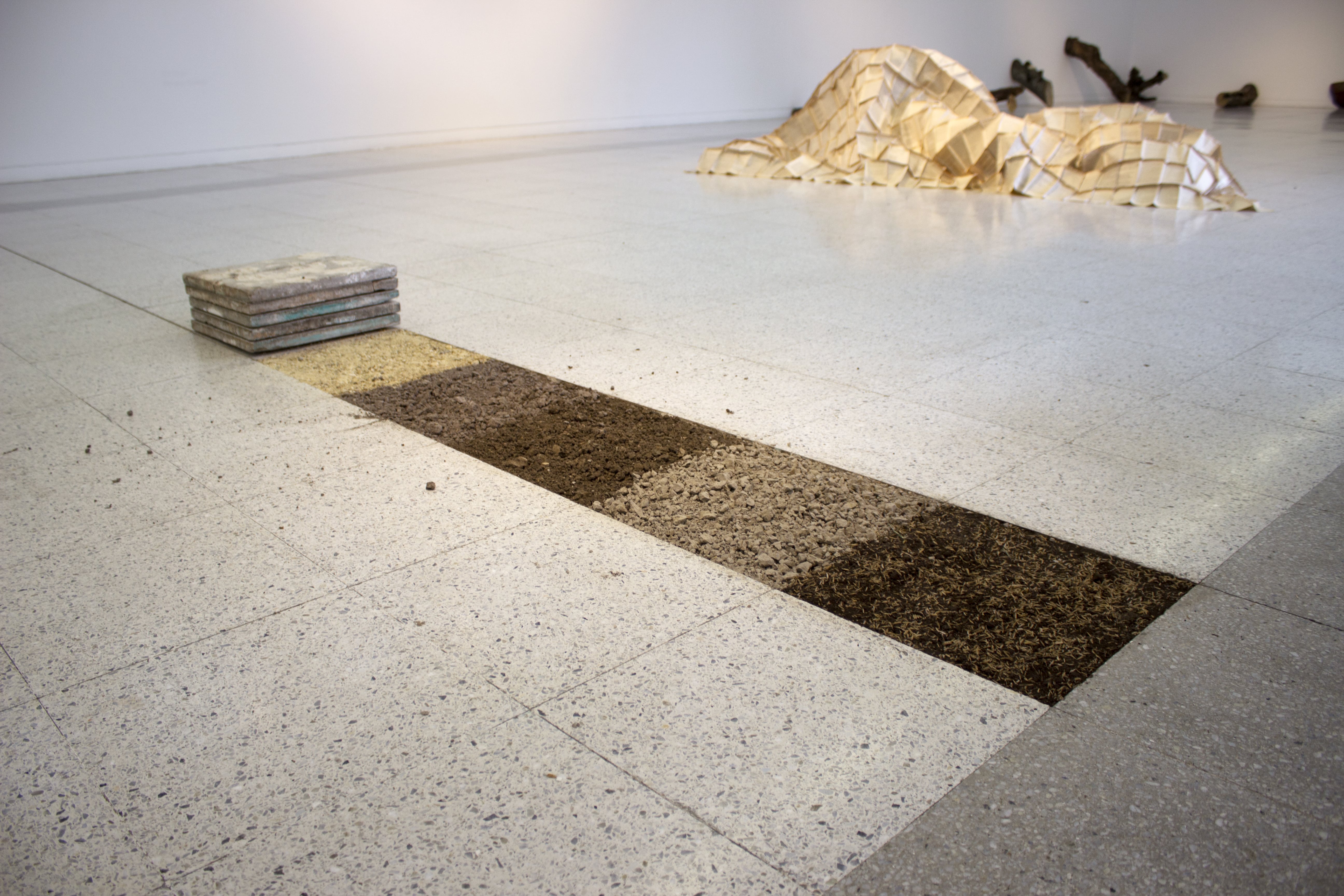
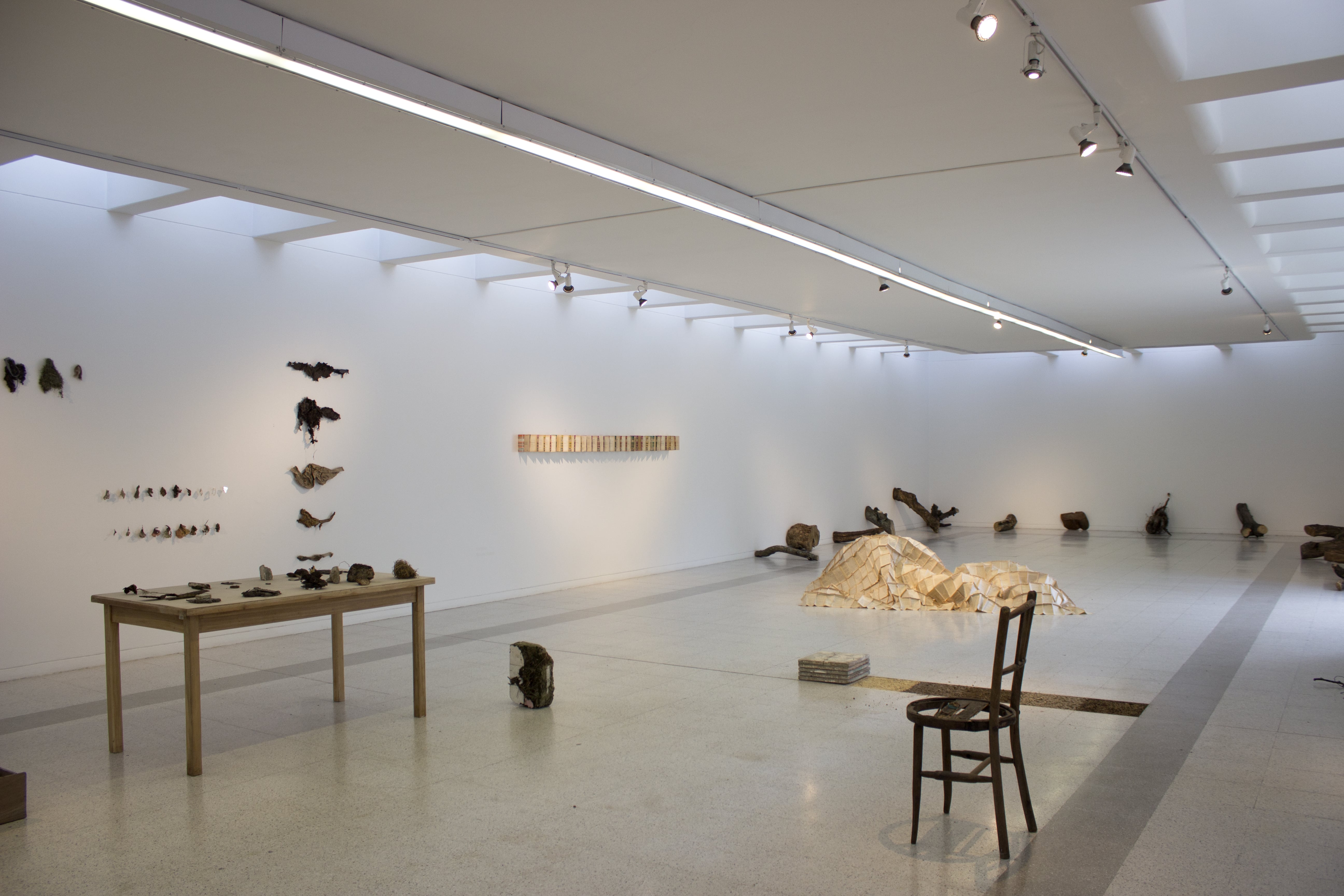
Situaciones en suma is the expositive result of Laboratorio Cano 2016, an artistic and pedagogical project developed by students in the Museum of Art of the National University of Colombia; in it, the participants have discussed their perceptions of the process of artistic creation, exhibition formats and dynamics, the topics addressed and their interests aesthetics, establishing its proposals on axes of creation, curatorship, museography and mediation.
*
After three successful versions Laboratorio Cano opened its doors for the first time to students from other universities to enrich this training platform with different approaches to the artistic field. Therefore, in this fourth version the students of the School of Arts of the National University are in creative dialogue with students of plastic and visual arts of the Javeriana University, Del bosque Unviersity and Jorge Tadeo Lozano University.
In total there are about 40 students, from different semesters, selected by application There are 6 work guidelines (Internship, Creation of work, Mediation of public, Museography and signposting, Out-of-school research and development) who will be making up the different components of the laboratory.
This project has been developed under the tutorship of guest teachers Jaime Cerón and Alejandro Mancera, and with the accompaniment of the three student curators Alejandro Morales, Juaniko Moreno and Jazmín Rojas Forero who since September 2015 have been developing their own curatorial approaches and conceptions in dialogue with different teachers and experts.
Thus, since June 1, the different spaces of the National University Art Museum have been inhabited, 24 hours a day, 7 days a week, by these young artists in training, immersed in a process of joint exploration, where their projects are closely managed and where they themselves confront each other and help solve aesthetic, technical and conceptual problems. A creative, harmonious and permanent dialogue that enriches and determines the final results.
Laboratorio Cano also ensures that these young artists face not only the appropriation of the conditions of a specific space such as the Art Museum that potentializes their processes, but also and above all, to the requirements of a team and professional environment, with artistic methodologies and logics (budgets, times, logistics, assembly, etc.) of a first-order exhibition space as an opportunity only to achieve a learning from this practice.
Archipelago: as a strategic axis
Understanding the Archipelago as a series of islands separated from each other, of dissimilar form and content, but united from below by the same topography, this fourth version of Laboratorio Cano proposes the Archipelago as a strategic axis because it manages to connect the different themes and concerns expressed in projects.
Although it is still too early to define its characteristics, it is already possible to glimpse some common traits such as: interest in working with found materials of different nature, in addition to using dissimilar processes which involve both traditional ways of doing things and technological processes. The sphere of the body is also a shared interest in several projects, but recurrent reference is made to their absence, when the vestiges are reviewed or traces it produces or the image it projects, using a variety of techniques that can range from drawing until the performance, to find the specific place in which each one is articulated to the museum space.
"The public is going to find itself with a very specific look, with a certain image of the world, which has to do both with the experience acquired by the artists in their respective schools, and with their experience of the real, in social, economic and political terms, which qualifies the conception of art in which they have been trained".
Jaime Cerón
Laboratorio Cano: A unique experience in Colombia
A workshop of reflection and construction of expositions under the premise that the expositive fact has to be treated as a scenario where to verify the truth content of the sensitivity.
Alejandro Burgos
The Laboratorio Cano was born in 2011 as a rethinking of the Salón Cano (Exhibition of the works of the UN School of Arts that started in 1958) from the students, for the interest of the Museum of Art to generate another form of link with the School of Fine and Visual Arts of the National University from Colombia.
The aim is to broaden the vision and projection of students in order to be able to situate themselves in a place professional of art and its practices, having access to artists and active curators of the art scene through tutoring processes
So far four versions (2011, 2013, 2015 and 2016) have been carried out with a total of 150 Students and recognized guest tutors such as José Alejandro Restrepo, Nicolás Paris, Olga Foronda, María Belén Sáez de Ibarra, Jaime Cerón and Alejandro Mancera, among others.
Text by Jaime Cerón
ES | EN
Situaciones en suma
Museo de Arte de la Universidad Nacional de Colombia
2016
Curatorial and museography
Alejandro Morales, Juaniko Moreno, Jazmín Rojas Forero
Artists
Andrés Forero / Andrés Roballo / Camila Ospina / Daniel Fajardo / Daniela Sáenz / Daniela Salamanca / Esteban Ferro & Juanita Espinosa / John Campos / José Gabriel Hernández / Juan Sebastián Testa / Karen Cárdenas / Lina Henao / Lucía González & Mauricio Gallego / Marcela Florián / Mariana Salazar / Mayerly Ferrucho & Marcela Rodríguez / Sergio Bonilla & Pablo Baresch / Pedro Jiménez & Santiago Lemus / Santiago González / Sarah Reina / Victoria Montaña / Liz Delmar García & Mateo García / Timothy Noble, Angelica Piedrahita, Camilo martinez, David Sepúlveda, Salomé Rojas & Carolina Avila
Tutorship
Jaime Cerón and Alejandro Mancera
Commissioned by
Museo de Arte de la Universidad Nacional










Situaciones en suma is the expositive result of Laboratorio Cano 2016, an artistic and pedagogical project developed by students in the Museum of Art of the National University of Colombia; in it, the participants have discussed their perceptions of the process of artistic creation, exhibition formats and dynamics, the topics addressed and their interests aesthetics, establishing its proposals on axes of creation, curatorship, museography and mediation.
*
After three successful versions Laboratorio Cano opened its doors for the first time to students from other universities to enrich this training platform with different approaches to the artistic field. Therefore, in this fourth version the students of the School of Arts of the National University are in creative dialogue with students of plastic and visual arts of the Javeriana University, Del bosque Unviersity and Jorge Tadeo Lozano University.
In total there are about 40 students, from different semesters, selected by application There are 6 work guidelines (Internship, Creation of work, Mediation of public, Museography and signposting, Out-of-school research and development) who will be making up the different components of the laboratory.
This project has been developed under the tutorship of guest teachers Jaime Cerón and Alejandro Mancera, and with the accompaniment of the three student curators Alejandro Morales, Juaniko Moreno and Jazmín Rojas Forero who since September 2015 have been developing their own curatorial approaches and conceptions in dialogue with different teachers and experts.
Thus, since June 1, the different spaces of the National University Art Museum have been inhabited, 24 hours a day, 7 days a week, by these young artists in training, immersed in a process of joint exploration, where their projects are closely managed and where they themselves confront each other and help solve aesthetic, technical and conceptual problems. A creative, harmonious and permanent dialogue that enriches and determines the final results.
Laboratorio Cano also ensures that these young artists face not only the appropriation of the conditions of a specific space such as the Art Museum that potentializes their processes, but also and above all, to the requirements of a team and professional environment, with artistic methodologies and logics (budgets, times, logistics, assembly, etc.) of a first-order exhibition space as an opportunity only to achieve a learning from this practice.
Archipelago: as a strategic axis
Understanding the Archipelago as a series of islands separated from each other, of dissimilar form and content, but united from below by the same topography, this fourth version of Laboratorio Cano proposes the Archipelago as a strategic axis because it manages to connect the different themes and concerns expressed in projects.
Although it is still too early to define its characteristics, it is already possible to glimpse some common traits such as: interest in working with found materials of different nature, in addition to using dissimilar processes which involve both traditional ways of doing things and technological processes. The sphere of the body is also a shared interest in several projects, but recurrent reference is made to their absence, when the vestiges are reviewed or traces it produces or the image it projects, using a variety of techniques that can range from drawing until the performance, to find the specific place in which each one is articulated to the museum space.
"The public is going to find itself with a very specific look, with a certain image of the world, which has to do both with the experience acquired by the artists in their respective schools, and with their experience of the real, in social, economic and political terms, which qualifies the conception of art in which they have been trained".
Jaime Cerón
Laboratorio Cano: A unique experience in Colombia
A workshop of reflection and construction of expositions under the premise that the expositive fact has to be treated as a scenario where to verify the truth content of the sensitivity.
Alejandro Burgos
The Laboratorio Cano was born in 2011 as a rethinking of the Salón Cano (Exhibition of the works of the UN School of Arts that started in 1958) from the students, for the interest of the Museum of Art to generate another form of link with the School of Fine and Visual Arts of the National University from Colombia.
The aim is to broaden the vision and projection of students in order to be able to situate themselves in a place professional of art and its practices, having access to artists and active curators of the art scene through tutoring processes
So far four versions (2011, 2013, 2015 and 2016) have been carried out with a total of 150 Students and recognized guest tutors such as José Alejandro Restrepo, Nicolás Paris, Olga Foronda, María Belén Sáez de Ibarra, Jaime Cerón and Alejandro Mancera, among others.
Text by Jaime Cerón
Después de tres exitosas versiones el Laboratorio Cano abrió por primera vez sus puertas a estudiantes de otras universidades para enriquecer esta plataforma de formación con diferentes enfoques sobre el campo artístico. Por ello, en esta cuarta versión los estudiantes de la Escuela de Artes de la Universidad Nacional, se encuentran en diálogo creativo con estudiantes de artes plásticas y visuales de la Universidad Javeriana, Universidad del Bosque y la Universidad Jorge Tadeo Lozano.
En total son cerca de 40 estudiantes, de distintos semestres, seleccionados por convocatoria bajo seis lineamientos de trabajo (Pasantía, Creación de obra, Mediación de público, Museografía y señalización, Investigación y Desarrollo de obra fuera de la escuela) quienes estarán conformando los diferentes componentes del labotatorio.
Este proyecto se ha desarrollado bajo la tutoría de los maestros invitados Jaime Cerón y Alejandro Mancera, y con el acompañamiento de los tres curadores estudiantes Alejandro Morales, Juaniko Moreno y Jazmín Rojas Forero quienes desde septiembre de 2015 han estado desarrollando sus propios enfoques y concepciones curatoriales en dialogo con distintos profesores y expertos.
Así, desde el 1 de junio, los distintos espacios del Museo de Arte de la Universidad Nacional han sido habitados, durante las 24 horas de los 7 días de la semana, por estos jóvenes artistas en formación, inmersos en un proceso de exploración conjunta, donde sus proyectos se gestan de manera cercana y donde ellos mismos se confrontan y ayudan a solucionar problemáticas estéticas, técnicas y conceptuales. Un diálogo creativo, armónico y permanente que enriquece y determina los resultados finales.
El Laboratorio Cano asegura además que estos jóvenes artistas se enfrenten, no solo a la apropiación de las condiciones de un espacio específico como el del Museo de Arte que potencializa sus procesos, sino también y sobre todo, a las exigencias de un equipo y entorno profesional, con las metodologías y lógicas artísticas (presupuestos, tiempos, logísticas, montaje, etc.) de un espacio de exhibición de primer orden como oportunidad única de lograr un aprendizaje a partir de esta práctica.
Archipiélago: como eje estratégico
Entendiendo el Archipiélago como una serie de islas separadas entre sí, de forma y contenido disímil, pero unidas desde abajo por la misma topografía, esta cuarta versión del Laboratorio Cano propone el Archipiélago como eje estratégico pues logra conectar los distintos temas e inquietudes plasmados en los proyectos.
Y aunque aún es temprano para definir sus características, ya se pueden vislumbrar algunos trazos comunes como el interés en trabajar con materiales encontrados de diferente naturaleza, además de utilizar procesos disimiles que involucran tanto los modos de hacer tradicionales como procesos tecnológicos. La esfera del cuerpo es también un interés compartido en varios proyectos, pero se alude recurrentemente a su ausencia, al revisar los vestigios o huellas que produce o la imagen que proyecta, utilizando diversidad de técnicas que pueden ir desde el dibujo hasta la acción, para encontrar el lugar específico en que cada uno se articule al espacio del museo.
“El público se va a encontrar con una mirada muy específica, con una cierta imagen del mundo, que tiene que ver tanto con la experiencia adquirida por los artistas en sus respectivas escuelas, como con su experiencia de lo real, en términos sociales, económicos y políticos, que matiza la concepción del arte en la que han sido formados”.Jaime Cerón
Laboratorio Cano: Una experiencia única en Colombia
‘Un taller de reflexión y construcción de exposiciones bajo la premisa que el hecho expositivo ha de ser tratado como un escenario donde verificar el contenido de verdad de la sensibilidad’.
Maestro Alejandro Burgos